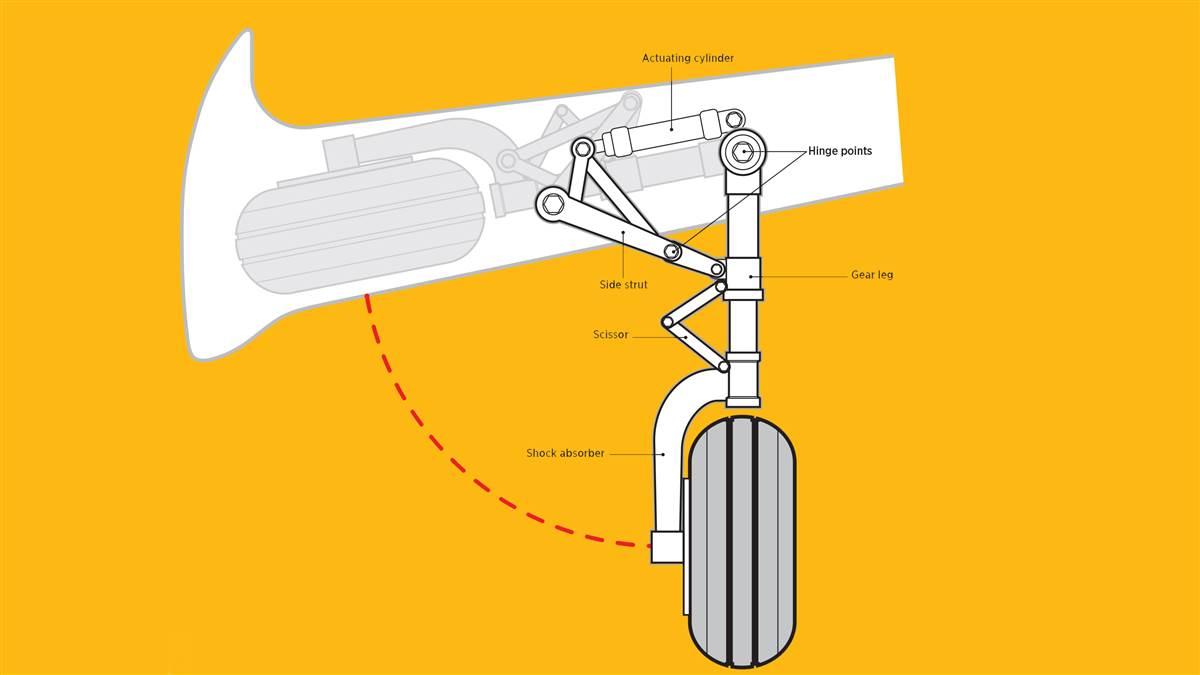
Watch the YouTube video of a landing gear check on a Boeing 777 to see the mighty strength and importance of the lowly gear extension mechanism. This little arm works to rotate the leg of the landing gear to fold up and under the aircraft, reducing drag in all aircraft, but especially so in light airplanes. In “Ask AOPA” on p. 21 you’ll find out the difference between tricycle and conventional landing gear, but “retractable” gear is found on aircraft that will allow you to tuck the gear up under the aircraft.
A hydraulic actuator or electromechanical system activates the gear extension to form the straight line of the gear leg. It locks the leg down and also helps pull it up. Two important elements are at work to make the gear move and to make sure it stays put until told otherwise: the actuating system and the up/down lock system. Once the gear is in the Up position, it is locked to prevent air loads and gravity from pulling the gear down. In the Down position, a secondary over-center locked strut moves into position and prevents the aircraft weight and landing loads from collapsing the landing gear.
Speedier aircraft such as the Piper Malibu are examples of retractable-gear aircraft. The only downside to retractable gear is the pilot and/or faulty machinery. If that gear doesn’t come down, you’ll land belly up.



